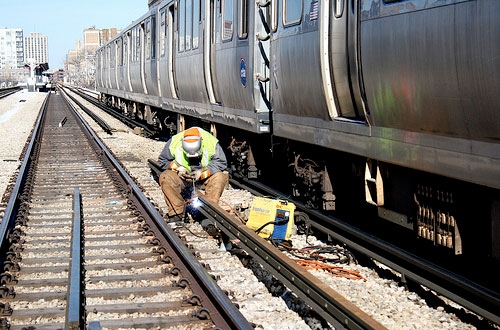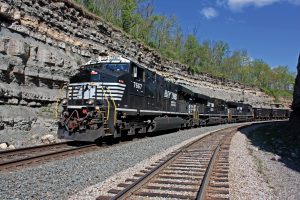CTA plans to rebuild northern section of Red Line and parallel Purple Line
Written by Jenifer Nunez, assistant editor
Chicago Transit Authority revealed the next step in its continued effort to modernize the Red Line. The first phase of the Red and Purple Modernization (RPM) program, which will completely rebuild the northern section of the Red Line and the parallel Purple Line is expected to begin this fall.
Additionally, the next step in a federal process to secure funding for the Red Line Extension plan CTA is entering, which would extend the Red Line south from 95th Street to 130th Street.
“As a world-class city, Chicago has a world-class transit service to connect residents to jobs, education, culture and above all opportunity,” said Chicago Mayor Rahm Emanuel. “CTA is investing in modernizing the Red Line as part of our strategy to create a seamless, safe and reliable transportation system for every neighborhood.”
The CTA’s Red Line runs 24 hours a day, seven days a week along 23 miles of tracks and is Chicago’s busiest rail line with about 75 million annual rides.
The RPM program and the Red Line Extension project are the latest in a series of Red Line projects to modernize and extend the backbone of the CTA’s rail system that have been undertaken since 2011.
“These projects are the next steps in our overall vision to rebuild, modernize and expand the entire Red Line,” said CTA President Forrest Claypool. “We’re already kicking off RPM by beginning reconstruction of the Wilson station this fall and continuing progress on the South Side by starting the new 95th Street Terminal this summer, following the successful completion of the Red Line South reconstruction last year. With both the Red and Purple Modernization and Red Line Extension projects, we’ll replace outdated infrastructure with a modern, efficient rail and build more than five miles of new track. Together, these improvements will offer CTA customers faster, more reliable service and increasing access to quality rail transportation for thousands of future riders.”
The CTA is also moving forward with its proposed Red Line Extension plan by beginning the second step of its environmental process to ultimately finish the Environmental Impact Study.
The RPM program will proceed in phases to fully replace old, deteriorating infrastructure and stations along the entire north branch of the Red Line and the parallel Purple Line and will pave the way for CTA to significantly increase train capacity for the next 80 years.
Most tracks and bridges along the Red and Purple lines are nearly 100 years old. Despite rising demand, the CTA is unable to increase capacity because of the current infrastructure’s age and structural limitations. Continuing to operate a busy rail line on this outdated infrastructure results in high maintenance costs, the need for frequent repairs that disrupt service and slow travel, as well as outdated stations that can’t accommodate elevators or other necessary and modern amenities.
The first phase of the RPM improvements will include two main components. The first entails station and track modernization by completely rebuilding the Wilson, Lawrence, Argyle, Berwyn and Bryn Mawr stations and rebuilding all tracks, support structures, bridges and viaducts for the Red and Purple lines between Lawrence and Bryn Mawr. The project also includes rebuilding the tracks, signals and support structures, which will significantly improve train speeds and service reliability on the slow zone-plagued stretch.
The second component of the project is the construction of a bypass north of the Belmont station to eliminate delays and speed up train service where the Red, Purple and Brown lines currently all intersect. The current configuration requires trains on three of four tracks to stop and wait for Brown Line trains to cross, which results in more than 40 percent of weekday trains being delayed by as much as three minutes. About 150,000 rides travel through this intersection each weekday, all of which are slowed down because trains must stop and wait for signal clearance. The structure’s original 1907 design makes it difficult, under present day and service demands, to provide reliable service and makes adding service extremely challenging.
Estimated cost for the first phase of RPM is $1.7 billion.
The 5.3-mile Red Line Extension project will extend south from the 95th Street Terminal through the greater Roseland community. Plans include construction of four new stations near 103rd Street, 111th Street, Michigan Avenue/116th Street and 130th Street.





